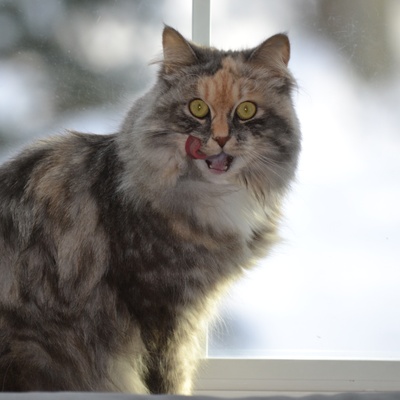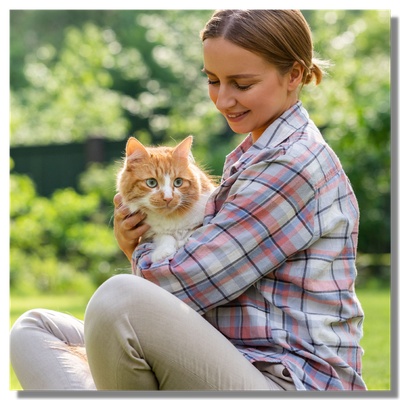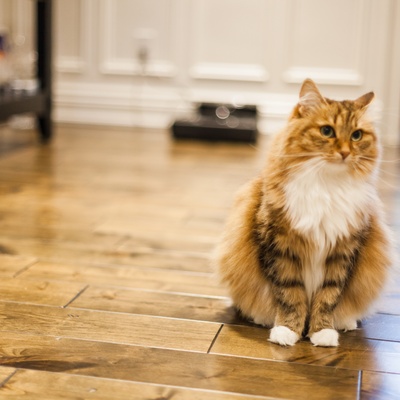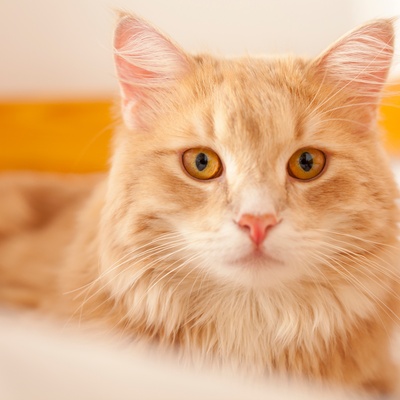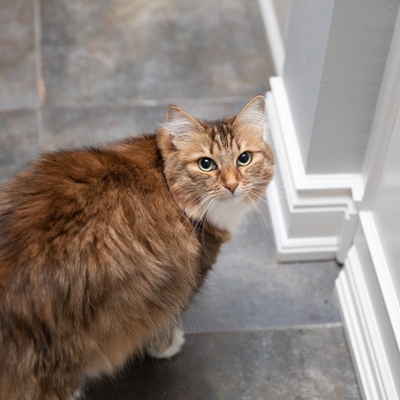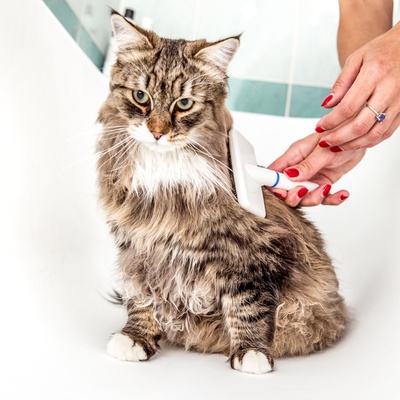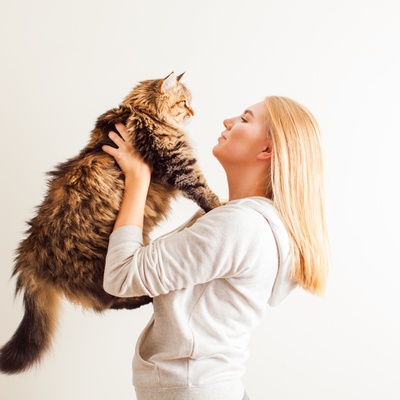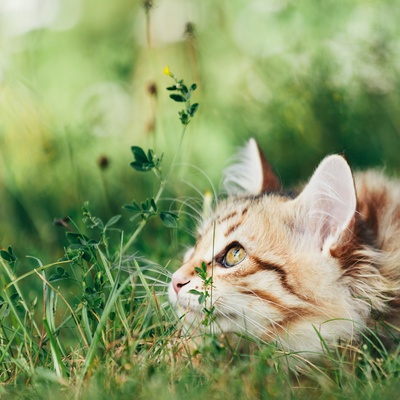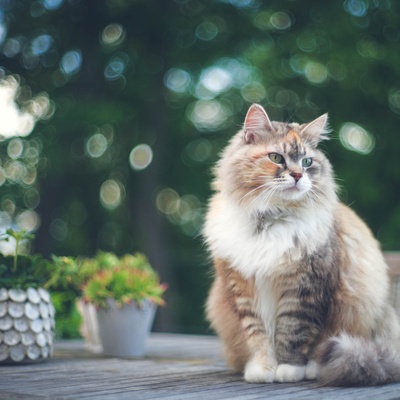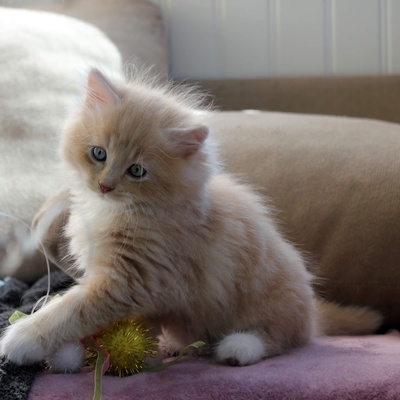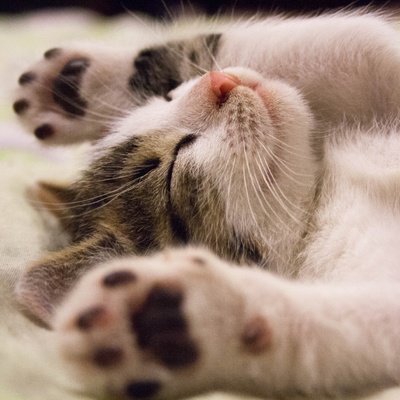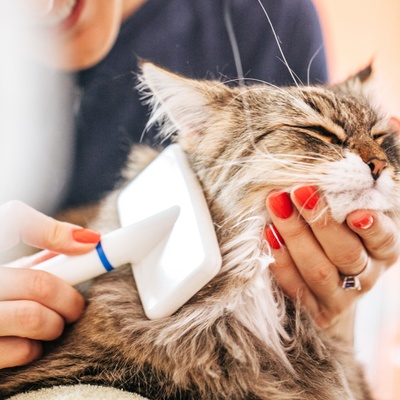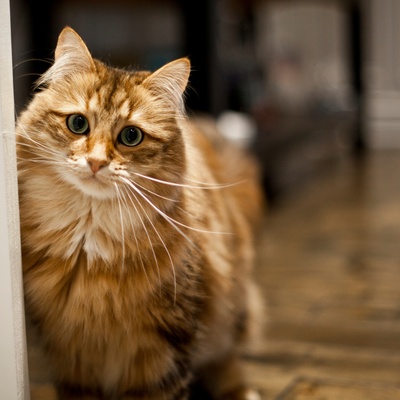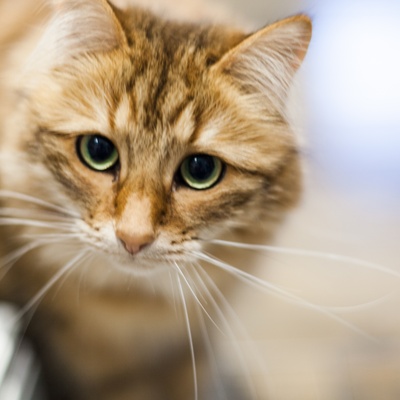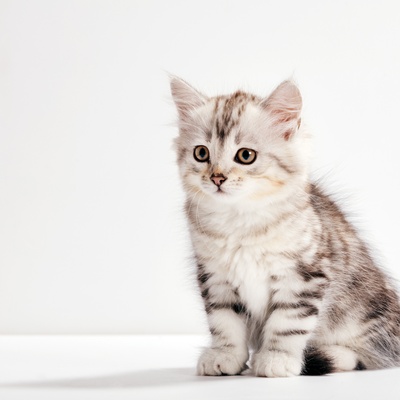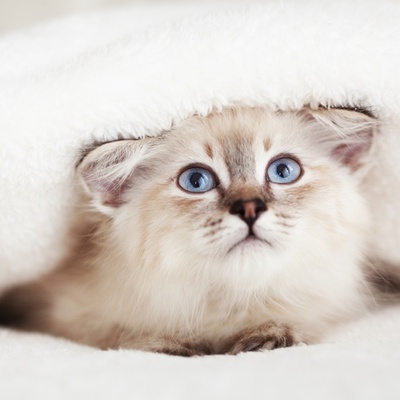Introducing the Siberian
Find out everything you need to know about the Siberian: its characteristics, its behaviour, its training and how much one costs.
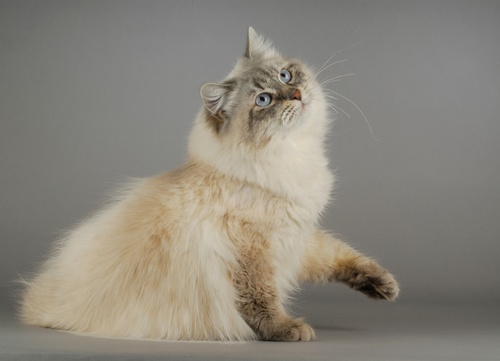
Find out everything you need to know about the Siberian: its characteristics, its behaviour, its training and how much one costs.
The Siberian is an extraordinary breed, boasting a luxuriant coat reminiscent of the Russian winters from which it hails. This natural breed is believed to have existed for centuries and was historically the cat of peasants, traders, and even Russian royalty.
The Siberian is a breed of abundance - from its dense, water-resistant fur to its robust health and vivacious personality. Far from being a mere lap cat, the Siberian is adventurous and playful, yet they are known for their calm demeanor and affectionate nature towards their human companions.
This selection outlines the unique features of the Siberian breed of cat.
The robust Siberian cat typically stands up to 12 inches tall and weighs between 15 and 20 pounds, a stature reflecting its hearty Russian heritage.
The Siberian boasts a long, dense coat, with a ruff around the neck, perfect for withstanding the harsh Siberian climate.
Remarkably, the Siberian is hypoallergenic, making it a splendid choice for allergy sufferers seeking feline companionship.
Siberian cats wear a variety of coats, from solid to patterned, with hues ranging from white to black and various shades in between.
This adaptable breed thrives in diverse settings, from cozy apartments to spacious houses with access to the outdoors.
Siberians are affable and sociable, cherishing interactions with children and coexisting peacefully with other household pets.
With a legacy of vigor, Siberians generally enjoy robust health, though they can be prone to certain breed-specific conditions.
Intelligent and amiable, Siberians respond well to training, blossoming with kindness and consistent engagement.
We can help you!
Every cat has its own character and specific needs. Making the right choice will ensure his well-being and yours.
Thanks to our quiz, you'll know which breed is right for you, depending on your lifestyle, expectations and many other criteria.
Don't wait any longer and take the quiz to find out the answer!
The Siberian cat's most striking feature is its luxurious fur, as thick and soft as a freshly fallen snow in its native Russia.
The majestic Siberian stands as a giant among felines. Males, larger than females, tip the scales at an impressive 15 to 20 pounds, while females range from 10 to 15 pounds.
Like a tale of growth mirroring the vast Russian landscape, the Siberian reaches full majestic size at 3-4 years, showcasing a sturdy frame, powerful muscles, and an opulent tail that sweeps behind them like a royal train.
The Siberian cat’s coat is a marvel of nature, long and flowing, designed to protect against the harsh Siberian winters. Its texture is luxuriously thick with a water-resistant topcoat over a dense undercoat, often accented with captivating waves and fringes around the collar and tail.
The Siberian cat's coat is a tapestry of nature's palette, commonly seen in vibrant earthy tones and patterns, including classic tabby, mackerel, and colorpoint varieties.
The Siberian is recognized as a hypoallergenic breed, making it the perfect companion for allergy sufferers.
The Siberian is a large and robust breed with a powerful yet elegant walk. Its medium-sized ears are rounded and set wide on a broad, wedge-shaped head. The breed has a muscular build, strong bones, and a full chest, reflecting its hardiness.
The well-proportioned muzzle complements its sweet expression, while its large, nearly round eyes vary in color from green to gold, contributing to its mystical appeal. These features combine to give the Siberian cat a distinctive and captivating appearance.
Grooming a Siberian is as majestic as the cat itself, requiring regular brushing several times a week due to its dense, luxurious coat. During the shedding seasons, in spring and fall, daily grooming sessions are advisable to manage the increased hair loss.
Bathing, while less frequent, is suggested every few months with a gentle feline-formulated shampoo. While Siberians maintain their cleanliness with self-grooming, human-assisted grooming not only keeps them looking regal but also serves as a bonding experience.
The Siberian cat is known for its amiable and adventurous spirit, embodying a gentle and playful essence in a substantial, agile body.
Siberians are renowned for their sociable and amenable disposition, often seeking out human company and forming strong bonds with their owners.
They are known to shadow their humans from room to room, craving interaction and showing a particular fondness for playtime. Yet, they also relish prolonged periods of affection and lounging with their family.
Their expressive vocalizations range from soft chirps to melodic purrs, signaling their contentment and desire for attention, thriving best with owners who are present and eager to engage with them.
The Siberian cat's demeanor is one of calm confidence, exhibiting patience and a serene temperament. They are a perfect match for family life, displaying remarkable compatibility with children and other pets, thanks to their sociable nature.
Even when overwhelmed, the Siberian prefers a peaceful retreat to solitude over any display of aggression, affirming their status as tranquil and loving companions.
The Siberian cat’s robust nature and thick coat suggest a heritage of boundless forests and snowy landscapes, but this breed is equally content in the cozy confines of a family home.
While they are independent and capable of entertaining themselves, they do best with companionship, whether it be human or another pet. They also need space to leap and perch, as they are agile climbers.
If you are worried about loosing track of him you can fit him with a GPS collar so you can track his movements and locate him if he escapes.
Known for their energetic and playful demeanor, Siberian are inquisitive creatures that relish interactive play with their owners, which serves to deepen their social bonds and provide mental stimulation.
Neglecting their need for engagement can lead to mischief, as boredom might coax out their instinctual need to hunt and explore. Providing a peaceful retreat for these spirited felines is essential, allowing them a sanctuary for those much-needed moments of rest.
Instilling good habits in a Siberian starts in kittenhood, with the absence of early education potentially leading to a less harmonious household. Training should be a blend of gentle guidance and firmness, where positive reinforcement shines and consistency is key.
Incorporating play into training sessions not only harnesses their natural behaviors but also promotes cognitive health, ensuring a well-adjusted and sociable member of the family.
Choosing a cat that matches your personality and lifestyle will ensure your well-being and his!
The Siberian, with its majestic and hardy character, is generally known for robust health and resilience. This breed is not commonly associated with breed-specific health issues, thanks to its natural and long-established lineage.
The Siberian is generally robust and healthy, thanks to its strong genetics. However, it can be prone to inherited conditions like hypertrophic cardiomyopathy and polycystic kidney disease. Regular DNA testing and vet check-ups for vaccinations and preventative care are important for its health.
Daily care includes managing fleas and worms, grooming its thick coat, and maintaining dental hygiene, claw clipping, and ear cleaning. Proper care ensures a long lifespan and enduring companionship for Siberians.
The Siberian known for its muscular body and agility, requires a premium diet for maintaining its health and physique. High-quality kibble, supplemented with hydrating vegetables, is recommended to support its kidney health and overall well-being.
Siberians grow slowly, reaching full size by 3-4 years, necessitating a diet tailored to their developmental needs. Consistent use of the same kibble brand and regular feeding schedules are important for digestive health.
Despite their tranquil and placid nature, Siberian are inherently playful and enjoy bursts of indoor activity. Vigilance with their diet is imperative, as a sedentary lifestyle can lead to weight gain. Engaging them in daily play and providing opportunities for exercise is key to their health, ensuring they remain active, healthy, and happy.
The Siberian, a treasured and sought-after breed, is available through numerous breeders. It is important to consider a few factors before adoption.
Siberian, renowned for their regal bearing and luxurious coats, are often bred by professionals within dedicated catteries. Prior to adopting, it is crucial to visit these places to witness firsthand the care and environment provided.
From June 10, 2024 you must have your cat microchipped by the age of 20 weeks old and register its details in a relevant database such as Petlog or The Governing Council of the Cat Fancy (GCCF). This is a legal requirement in Britain, and failure to comply could result in a fine of
.
It is also vital to ensure that health screenings and DNA tests for common genetic issues have been conducted on both the kitten and its parents.
The cost to acquire a Siberian can fluctuate based on factors like the cat's pedigree, the breeder's reputation, and the cat's age. Typically, the price range for a Siberian kitten might vary considerably, but you can expect a ballpark figure from around
to
.
Remember that maintaining a Siberian comes with its own set of expenses, which can amount to an estimated annual cost of
to
. This includes their nutritional needs, healthcare, grooming, and other necessities over their lifespan, which can average 12 to 15 years.
Opting for a Siberian cat is a long-term commitment and should be made with due consideration of all related responsibilities.
Choosing a cat that matches your personality and lifestyle will ensure your well-being and his!
To access the most relevant information, suitable payment methods, and delivery in your region, please select the website corresponding to your country.
